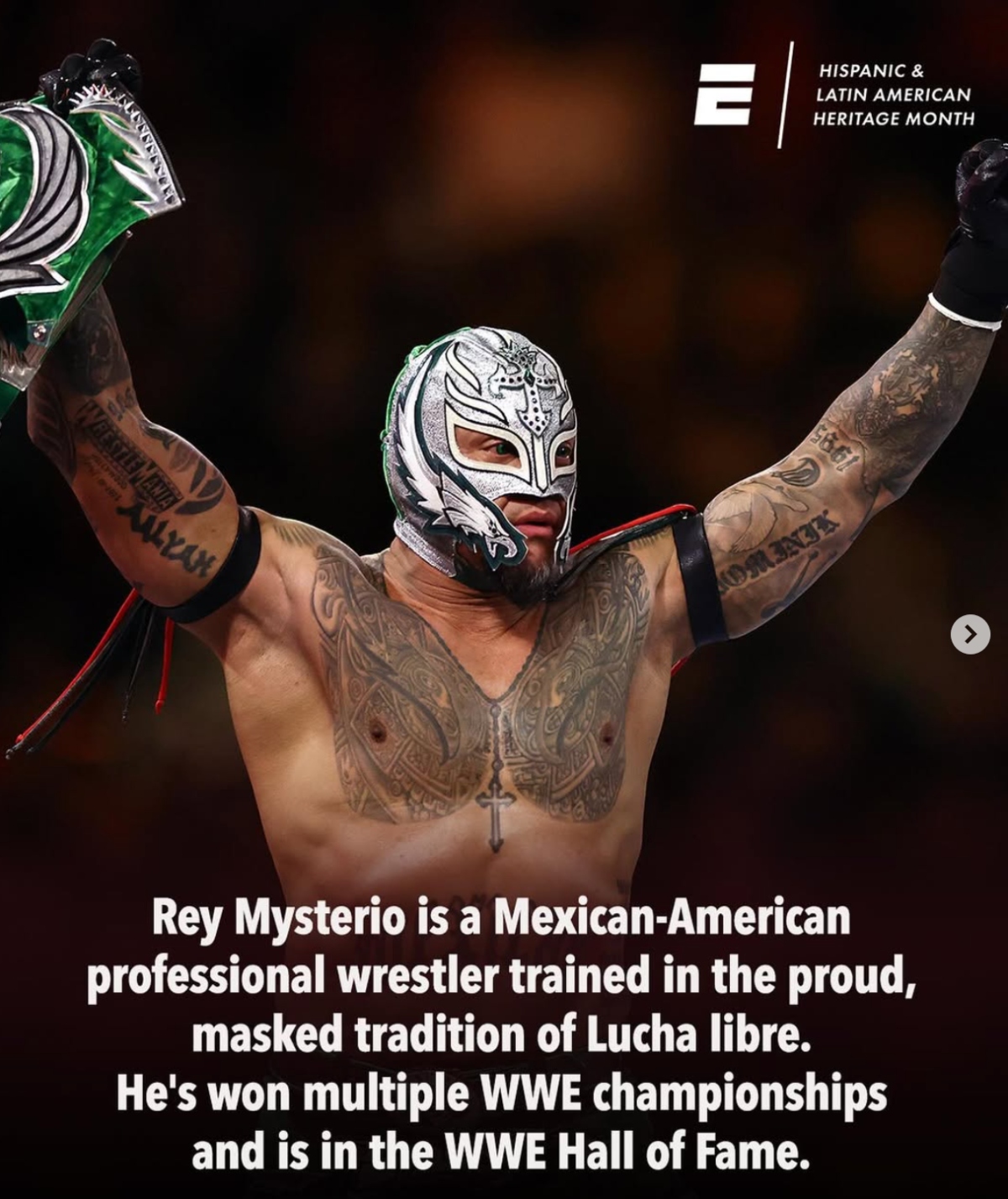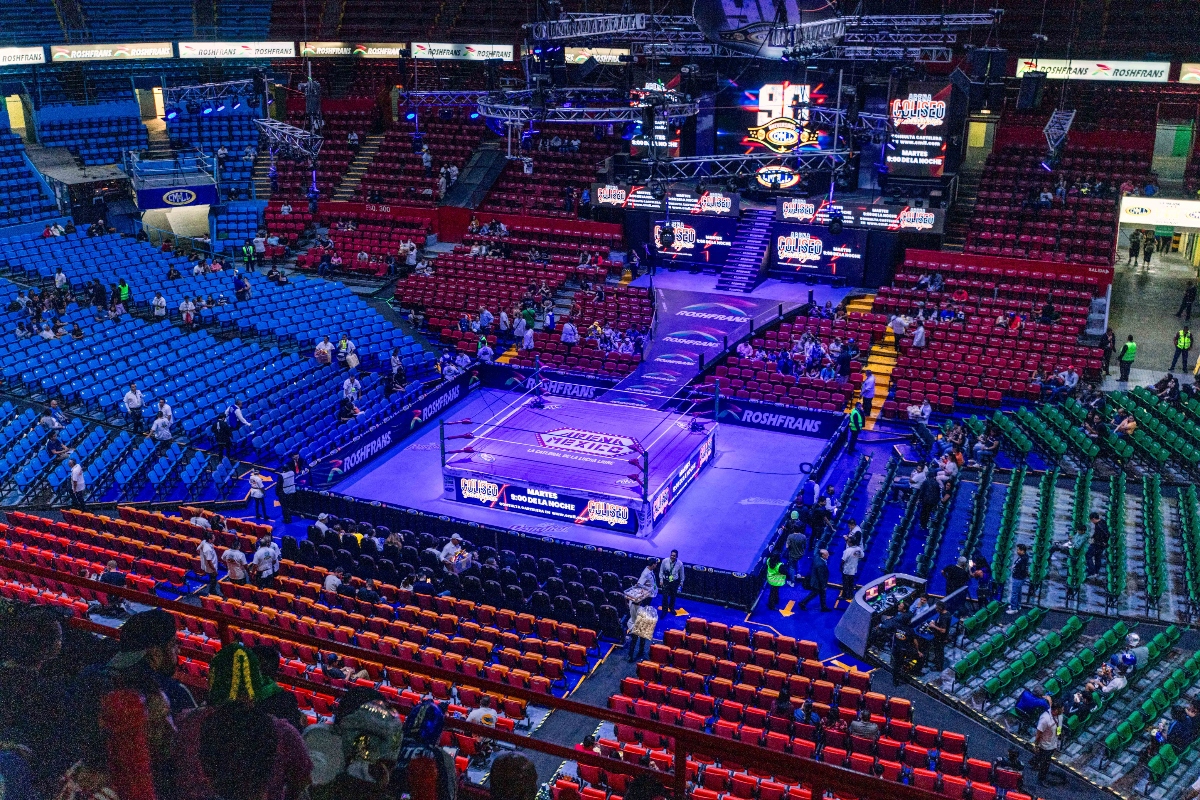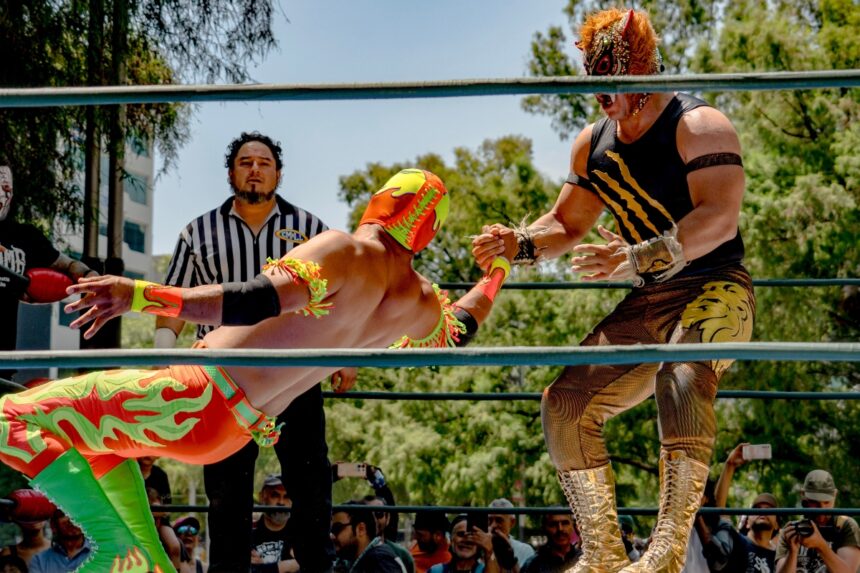Mexican wrestling is not just a sport; it is a cultural phenomenon that combines spectacle, drama and athletic skill.
This exciting world has captured the hearts of millions, especially in the U.S. Hispanic community, where it is seen as a bridge between tradition and entertainment.
With deep roots

Mexican wrestling has its origins in the 1930s, but reached its greatest splendor in the 1950s thanks to figures such as El Santo and Blue Demon.
These wrestlers not only shone in the ring, but also took their exploits to the movies, establishing themselves as popular idols.
His fights were not simple bouts; they were emotion-filled stories that connected with the audience.
Sports and entertainment

One of the most unique characteristics of Mexican wrestling is its blend of athleticism and theatricality.
Wrestlers must be both athletes and actors
QuéOnnda
Fighters must be both athletes and actors, delivering spectacular moves and captivating narratives.
The mask, a central element of wrestling, symbolizes identity and mystery, becoming a powerful symbol in and out of the ring.
Impact

In the United States, Mexican wrestling has garnered a dedicated following, particularly within the Hispanic community.
Promotions like Lucha Libre AAA Worldwide (AAA), established in 1992 by Antonio Peña, have been instrumental in bringing this vibrant spectacle to international audiences.
AAA’s events often draw thousands of enthusiastic fans, showcasing the sport’s widespread appeal.
Rey Mysterio, an iconic figure

A pivotal figure in popularizing lucha libre on the global stage is Óscar Gutiérrez, better known by his ring name, Rey Mysterio.
Born on December 11, 1974, in Chula Vista, California, Mysterio was trained by his uncle, Rey Misterio Sr., and debuted professionally on April 30, 1989.
He gained prominence in promotions like Extreme Championship Wrestling (ECW) and World Championship Wrestling (WCW) before joining World Wrestling Entertainment (WWE) in 2002.
Throughout his illustrious career, Mysterio has secured multiple championships, including the WWE Championship and the World Heavyweight Championship, solidifying his status as a trailblazer for lucha libre in mainstream wrestling.
For many Hispanic families in the U.S., watching lucha libre serves as a meaningful connection to their cultural heritage.
The colorful masks, high-flying maneuvers, and dramatic storytelling inherent in lucha libre resonate deeply, offering both entertainment and a sense of cultural pride.
This tradition not only provides a link to ancestral roots but also fosters community among fans who share a passion for this unique form of wrestling.
The future

With the rise of digital platforms around the world, Mexican wrestling is reaching new audiences.
The combination of tradition and modernity ensures that this show-sport will continue to be an important part of Hispanic culture, both in Mexico and abroad.
For more information, visit QuéOnnda.com.























